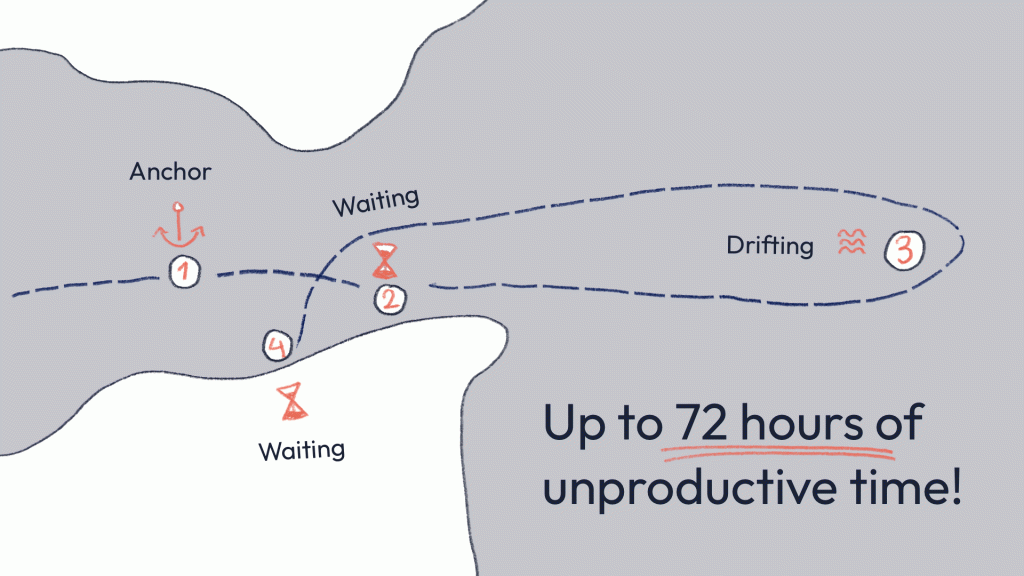Exposing Unproductive Time in a Port Call
In the world of maritime logistics, port turnaround time is a critical metric for optimization of the port call process, and often, there is hidden time being wasted. While it’s easy to discuss inefficiencies at a high level, the real challenge lies in making those inefficiencies visible. By visualizing this inefficiency, we offer a compelling look into how a vessel’s time in port can encounter various delays, and how their effects ripple across port operations.
Let’s take a look at this illustration.

1. Vessel arrival
The vessel first approached from the east, and its timeline tells a revealing story. Upon arrival (1), the vessel couldn’t head straight to the berth. Instead, it was forced to anchor offshore, simply waiting. Why? The terminal was occupied. This is the first clear instance of wasted time: valuable operational hours spent doing nothing, because a berth was not yet available.
2. Waiting at berth
When the vessel eventually moved to the quay (2), the were still more delays ahead. It reached the northern bay, only to wait again. This time, the holdup was due to the unavailability of cargo handling gangs. Once more, the vessel was stuck, idle at berth, unable to unload or load cargo. From a business perspective, every idle hour translates to financial loss, not only for the shipping line but also for the port and its stakeholders.
3. Drifting
Then came perhaps the most striking delay: the vessel left the berth and drifted back out to the eastern side of the port, where it waited for more than 24 hours (3). In this entire period of time, the vessel wasn’t sailing, nor was it engaged in cargo operations. And again, this was time lost with no value created. In some of our research, this unproductive time can go up to 72 hours (!).
4. More waiting at departure
Even on departure, delays continued. The vessel couldn’t leave promptly because a bunker barge was still alongside (4). This seemingly minor detail had big implications. Not only was the vessel delayed, but the terminal remained occupied and unable to do cargo operations during this period. That’s double the waste, on both the vessel and port terminal sides.
This timeline of events serves as a powerful illustration of inefficiencies hiding in plain sight. Port turnaround time isn’t just about when a vessel enters and exits a port. It’s about every moment before, after, and in between; when it’s waiting at anchor, idling at berth, or stuck due to operational bottlenecks. By making these timelines visible, we gain the insights needed to drive real change.
Improving port turnaround time efficiency isn’t just a matter of better scheduling. It’s about transparency, collaboration, and technology-enabled visibility. Only when we shine a light on where and how time is lost can the industry begin to reclaim it.

Léon Gommans | CEO/Co Founder of Teqplay
A serial entrepreneur who’s passionate about #innovation, #technology, #collaboration, and of course, #maritime. The mission is: to connect the dots & to get it to work, together with the industry!
- +31 (0)6 55306660
- leon@teqplay.com
- Léon Gommans
